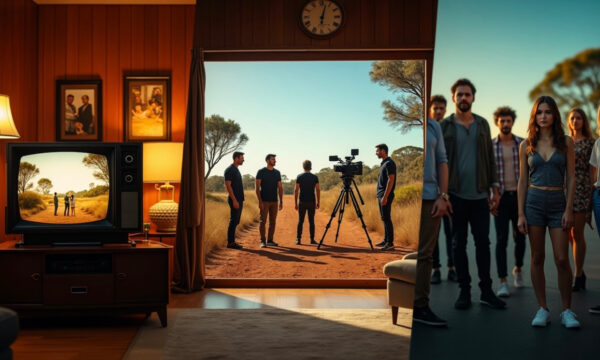How to optimise B2B lead conversions

Most people who work in sales or marketing have at some point probably heard someone say, “Lead conversion is revenue” – and it actually is. Teams invest in multiple resources to find leads and move them down the funnel to conversion. When the lead converts to a paying customer, the revenue numbers go up and it’s a hurrah for the team.
The opposite is also true. Low or zero conversions hurt the bottom line and no one goes home happy.
Studies show that up to 42% of B2B sales and marketing professionals find lead conversion challenging, and that’s not surprising – insufficient data on prospects coupled with stiff competition from existing and start-ups can make anyone’s job challenging.
So how the process be optimised to gain more conversions? Here are lead conversion strategies worth considering.
Refine buyer personas
Before hunting for prospects, it’s necessary to know what to look for. Customer needs change over time, and companies change too, rolling out new products and services or narrowing down offerings.
So how often should businesses re-look at their buyer personas? Every six months to a year is good enough to check in and see if a change is needed. What should they be looking for?
Vague personas that don’t help identify audiences’ motivations, needs, or pain points
Personas that don’t reflect the business. In the event that new product/services or shift operations are added to suit niche markets, old personas must be replaced with new ones
Too many personas can spread the business too thin and dilute your focus. It’s important to bear in mind how individualised content will be created
As an exercise it’s worth creating some negative customers, who are typically a bad fit, to help fine-tune things.
Create landing pages
… that complement email marketing campaigns
Marketers send tons of promotional emails every day, hoping to capture their audiences’ interest enough to start a conversation. But when campaigns aren’t running as successfully as they should, aka driving lead conversations, a strategic landing page may help with that.
The landing page is where the audience lands after clicking on a link in an email. Its goal is to get the user to take specific action, which may help increase lead conversion rates.
Here are tips for putting together a strong landing page:
Ensure consistency in the landing page with the email: accentuate the same message, use the same language, fonts, and visuals
Tell them why they should take action. The visitor who clicks the link on the email is most likely considering taking action. The landing page should be used to expound on the benefits of moving forward. It’s a good idea to include testimonials, data about the solution’s usefulness or reviews to convince them
Let the CTA stand out: use a different colour, a larger font and words that drive home the benefits
Map the content
This is an opportunity to look at what exists and identify the gaps to determine what new content is needed. It allows businesses to see the point where audiences are most engaged and where they get stuck and leave.
For the process to be effective, it’s necessary to work backward. Starting from the point of conversion, the idea is to trace back to the actions and content that facilitated the conversion.
The following questions may help draw a logical pathway
Which pages did they visit?
In what order?
Which emails had them clicking through?
Did they convert on an offer?
There may in fact be several logical pathways, but a closer look will pick up common patterns among the customers.
Having identified the logical pathways, it’s now time to think about the content that should be sent to nurture leads along these pathways.
Content assets vary from stage to stage, so here’s an idea of suitable content for every point of the journey.
Awareness stage: blog posts, ebooks and e-guides, checklists, infographics, videos and white papers.
Evaluation stage: comparison e-guides, case studies, landing pages, product/service list, datasheets and podcasts or videos talking about products/services.
Purchase stage: FAQs, free trials, live demos, sales landing pages and testimonials.
There are many instances when content assets appear in two or all three stages. This is okay since the content serves a different purpose. Awareness videos, for example, may cover general subjects while evaluation stage videos serve offerings as viable solutions.
Make cold calls
A study by RAIN Group revealed that 62% of B2Bs want to hear from vendors when looking for solutions to fix a problem. A further 71% would appreciate hearing from a salesperson at the early stages of the purchase process.
There’s no reason a business shouldn’t make cold calls. Best practices include:
Finding leads: research good fit business and identify the contact persons and their direct numbers where possible. Visit the company site, check out their web activity to gain a basic understanding of the business and its needs.
Prepare a script: work on an opener, body and conclusion that leads to the goal. Explain the reason for the call. Present as a professional problem solver, use credible data to prove value, and ask for the goal.
Look up common objections in the line of work in question and turn them into opportunities: objections are mostly unanswered questions that make prospects wary of callers. Work out honest answers to these questions to help navigate the call.
Check call records for days and hours when prospects have been most responsive: block those days and hours to make the calls. Endeavour to keep distractions at bay to ensure focus is solely on the lead.
Track calling results: what was the outcome of the call? Was there something that could have been said differently? What feedback was received? Use the information to refine the strategy.
Targeted ads
To get our message out there, we often cast our nets to all and sundry then wonder why there are no fish. Targeted ads allow businesses to get their message to the right audience to encourage engagement and conversion. Since the ads only appear to website users who have expressed interest in the solutions on offer, results are likely to be seen happening faster compared with other strategies.
To get a targeted ad up and running, it’ll be useful to work with an advertising network like Google Ad Networks or a social network like Facebook. These networks show ads to Internet users depending on their digital behaviour, demographics and buying history.
To get the most of targeted ads:
Start by targeting existing customers – they are already familiar with the solutions and are more likely to respond positively
Split test: test various targeting options (interests, demographics, buying behaviour) to find the most effective one. Create two campaigns with slightly different parameters to find the most promising prospects.
Target a broad clientele: overly narrow targeting locks out potential customers who may not know how to search for solutions. Try embracing a broader clientele.
Go for prospects at the lower stages of the sales funnel – these are typically prospects who are exploring solutions and likely to convert.
The editorial unit
























Facebook
Twitter
Instagram
YouTube
RSS